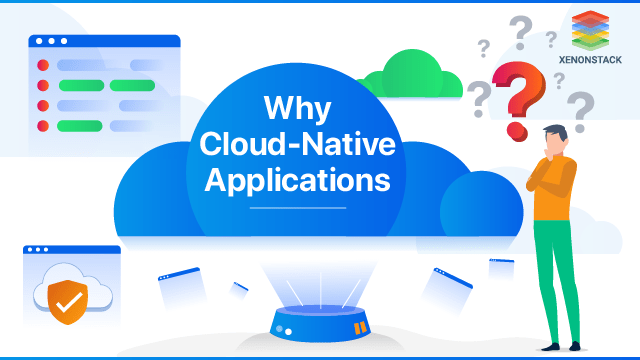In recent years, cloud-native technologies have emerged as a transformative force in the world of software development and deployment. As businesses strive to adapt to the demands of a digital age, the traditional methods of application development and infrastructure management have become outdated. Cloud-native, a term that is often mentioned in technology circles, represents a paradigm shift in how applications are built, deployed, and scaled. This article will explore the essence of cloud-native, its key principles, benefits, and the future it holds for enterprises striving for innovation and agility in a rapidly evolving tech landscape.
Defining Cloud-Native
Cloud-native is an approach to software development and delivery that leverages cloud computing to build, run, and manage applications. It emphasizes a set of principles and practices that maximize the benefits of cloud infrastructure and services, leading to increased scalability, resilience, and efficiency. The term “cloud-native” became popular with the advent of cloud computing, containerization, microservices architecture, and DevOps practices.
Key Principles of Cloud-Native
- Microservices Architecture: At the heart of cloud-native lies the microservices architectural pattern. Instead of building monolithic applications, cloud-native developers break down applications into smaller, loosely coupled services that can be independently developed, deployed, and scaled. This modular approach enables easier maintenance and the ability to adapt to changing requirements.
- Containers: Containers encapsulate applications and their dependencies, making them portable and consistent across different environments. Docker, a popular containerization platform, allows developers to package applications, libraries, and configurations, ensuring that they run consistently regardless of the underlying infrastructure.
- Orchestration: Cloud-native applications are orchestrated using container orchestration platforms like Kubernetes. Kubernetes automates the deployment, scaling, and management of containerized applications, simplifying the complexities of managing distributed systems.
- Continuous Integration and Continuous Deployment (CI/CD): CI/CD pipelines streamline the process of integrating code changes, automating testing, and deploying applications to production. This practice reduces time-to-market and ensures faster iteration cycles.
- Infrastructure as Code (IaC): Infrastructure as Code enables developers to define and manage infrastructure using code. Tools like Terraform and CloudFormation allow teams to version control their infrastructure and provision resources efficiently.
Benefits of Embracing Cloud-Native Technologies
- Scalability: Cloud-native applications are designed to scale effortlessly. The use of microservices and container orchestration ensures that applications can adapt to fluctuating demands, maintaining optimal performance even during traffic spikes.
- Resilience: The modularity of microservices enhances application resilience. When a single service fails, the overall application can continue functioning, reducing downtime and providing a better user experience.
- Faster Time-to-Market: CI/CD pipelines and automation enable rapid development and deployment cycles, allowing organizations to release new features and updates quickly, gaining a competitive edge in the market.
- Cost-Efficiency: Cloud-native technologies optimize resource utilization, enabling organizations to pay only for what they use. Additionally, the elasticity of cloud infrastructure allows businesses to scale resources up or down based on demand, eliminating the need for overprovisioning.
- DevOps Culture: Cloud-native encourages a DevOps culture, promoting collaboration between development and operations teams. This collaborative approach fosters better communication, faster feedback loops, and ultimately more reliable applications.
- Improved Observability: Cloud-native applications are designed with observability in mind. Logging, monitoring, and tracing tools provide comprehensive insights into application performance, helping to identify and address issues proactively.
Challenges and Considerations
While the benefits of adopting cloud-native technologies are compelling, organizations should be mindful of the challenges and considerations associated with this transition.
- Cultural Shift: Embracing cloud-native requires a cultural shift in the organization. It demands a commitment to agile practices, collaboration, and continuous improvement across teams.
- Learning Curve: Cloud-native technologies can be complex, and teams might require additional training and upskilling to master new tools and practices effectively.
- Security Concerns: Cloud-native environments introduce new security considerations, such as container security, API vulnerabilities, and securing CI/CD pipelines. Implementing robust security measures is crucial to safeguard sensitive data and assets.
- Application Architecture: Not all applications are suitable for a cloud-native architecture. Legacy applications or those with tightly coupled components may require refactoring or redesign to fully realize the benefits of cloud-native.
The Future of Cloud-Native
The cloud-native ecosystem is constantly evolving, driven by innovations from both the open-source community and cloud service providers. Some key trends and developments in the cloud-native space include:
- Serverless Computing: Serverless computing abstracts away infrastructure management, allowing developers to focus solely on writing code. Platforms like AWS Lambda and Azure Functions execute code in response to events, providing a highly scalable and cost-efficient approach.
- Service Mesh: Service mesh technology, exemplified by projects like Istio and Linkerd, enhances communication and control between microservices. It improves observability, security, and traffic management in complex, distributed architectures.
- Edge Computing: With the rise of Internet of Things (IoT) and low-latency applications, edge computing brings computing resources closer to end-users and devices, reducing latency and enhancing user experiences.
- GitOps: GitOps is an emerging practice that promotes using Git repositories as a single source of truth for infrastructure and application definitions. This approach simplifies version control, rollback, and auditing processes.
Deduction
Cloud-native technologies have revolutionized the way applications are developed, deployed, and managed. By embracing microservices, containers, and orchestration, organizations can achieve greater scalability, resilience, and efficiency in their software delivery processes. The benefits of cloud-native extend beyond just cost savings; they provide organizations with the agility and innovation necessary to thrive in today’s fast-paced, digitally-driven world. As the cloud-native ecosystem continues to evolve, businesses must adapt to stay competitive and position themselves for success in the future. By embracing the cloud-native mindset and adopting the latest technologies, enterprises can unleash the full potential of the cloud and propel their digital transformation journey.
